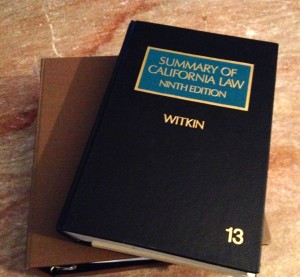Do You Have A Lawyer? Creation of the Attorney-Client Relationship
Legal malpractice cannot exist unless an attorney-client relationship also existed between the lawyer and the client at the time of the attorney’s alleged misconduct.
Sometimes, people believe they have legal representation when, in fact, the attorney-client relationship has been dissolved or never existed at all. At other times, attorneys accused of malpractice will deny representing the client (either completely, or at the time the alleged wrongful conduct took place).
In order to evaluate the situation properly, it’s necessary to know the hallmarks of an attorney-client relationship, and how to create one. Let’s examine them now:
1. Mutual Consent to Representation. An attorney-client relationship exists only when both the attorney and the client consent to formation (and continuation) of the attorney-client relationship. The client must authorize the attorney to act on his or her behalf, and the attorney must accept this authorization.
PRACTICE TIP: Attorneys and clients should each obtain the other’s written consent to representation at the time the attorney-client relationship commences. The consent should be dated and contain all relevant terms of the representation.
2. Scope of Representation. The attorney-client relationship is not unlimited. An attorney represents the client only with regard to the specific matters (or practice areas) for which the client has hired the attorney, and upon which the attorney has agreed to act on the client’s behalf. For example: an attorney who represents a client for estate planning purposes is not automatically also the client’s attorney for personal injury claims. An additional retainer, or some other mutually-accepted extension of the attorney-client relationship, would be necessary to expand the representation beyond estate planning matters.
PRACTICE TIP: The attorney’s retainer letter should specify the area(s) and/or claims for which the client is hiring the attorney, and for which the attorney agrees to represent the client. The retainer should also specify that additional matters require a written modification of the retainer agreement.
3. Meetings and Consultations, Without More, May Not Create an Attorney-Client Relationship. Many attorneys offer initial consultations or conferences with prospective clients, either in person or by telephone. These meetings may, or may not, result in formation of an attorney-client relationship. Ethics and legal practice rules established by the Bar Associations of various states may govern (or impact) whether or not an attorney-client relationship emerges from such a meeting.
PRACTICE TIP: Attorneys should always provide prospective clients with a letter or follow-up after a meeting or consultation, stating whether or not an attorney-client relationship has been formed. A retainer agreement satisfies this follow-up requirement, but where no attorney-client relationship results from the meeting, the attorney would be wise to confirm this, at least via email.
4. Invoices For Legal Services Suggest an Attorney-Client Relationship. Where an attorney bills a person for work performed on that person’s behalf, an attorney-client relationship often exists, even in the absence of a formal retainer agreement. However, both clients and attorneys are best protected when a written retainer covers all legal practice.
PRACTICE TIP: Even if a retainer is not required for the representation in question, attorneys should use a written retainer agreement whenever possible. Note: in many states, and situations, a written retainer is required by law.
If you believe you have an attorney-client relationship with an attorney, and that the attorney has committed malpractice, seek the advice and counsel of an experienced legal malpractice attorney promptly to preserve your legal rights. This post alone cannot tell you whether or not an attorney-client relationship existed in your specific case. Nor can any other article or online source. Always obtain an opinion from a qualified attorney (without delay) prior to making a decision about your case and legal rights.
















